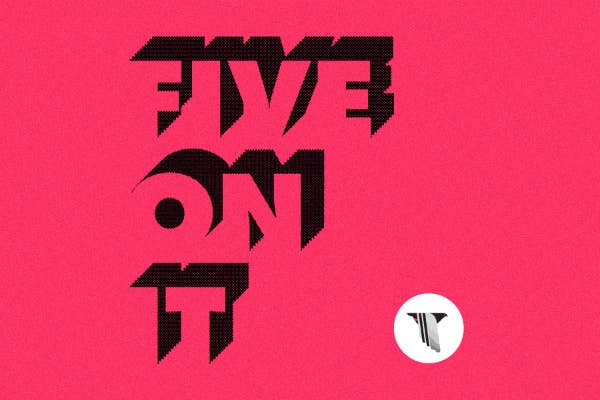
5 On It is a feature that looks at five of the best under-the-radar rap findings from the past month, highlighting new or recently discovered artists, or interesting obscurities.
It started as Saturday stopgap and quickly became a ritual. To recap: In the beginning of 2014, I was doing a piss poor job of fulfilling my duties at P&P due to personal and professional turmoil. I stepped back for a moment and returned with an idea to center my scattered brain: A weekly column highlighting, as I described in an email to Jacob and Constant Gardner, “five rap submissions or things I find that are raw but have potential.”
At its core, 5 On It is an attempt to set a barometer for what I consider “great” or “interesting” while also trying to make sense of the world through other artists' efforts to comprehend their own worlds.
Since 5 On It started in March 2014, it’s evolved: From a weekly to a biweekly, a biweekly to a monthly accompanied by a few longer, singular editorials on interesting artists. It may even move away from that format soon. These shifts aren’t for a lack of interesting subjects (though five compelling new rappers every week was a bit of an ambitious pace to set at the start), but rather part and parcel of a landscape that celebrates words and serial columns less, and hungers for discovery without the savory editorial bits that got so many of us to love writing (and talking) about music in the first place.
We like our narratives and our new rising stars, but we increasingly like them first through playlists and then in videos and interviews that can be turned into memes and spread around like California wildfire. There’s no judgment there: That’s the mode of the day. It’s a little bit depressing for someone who grew up poring over issues of URB and Scratch—cutting out favorite editions Inside Hype (after all, the inspiration for this very column) and really believing in the sanctity of the Source’s “5 Mic” rating system—but it is our reality. You can adjust or stay stuck in your ways, evolve or die. You can still celebrate forms of the past (and even profit off of them, as certain small batch magazines have shown in the worlds of art and cuisine), you just have to understand that you can’t bring it back whole cloth.
Of course, none of that really has any bearing on 5 On It’s purpose, only its methods. For now, enjoy 20 of my favorite finds from the column’s third year in no particular order (and the 5 On It Spotify playlists below that collects some favorite songs from artists who've been featured over the last three years).
Ugly God

Ugly God kicked off 2016's first 5 On It, so we come full circle to end the year.
In the time since "Booty From A Distance" signaled Ugly God's post-Lil B humor and nonchalant rapping, the Houston native has become a viral internet rap sensation whose online fame has translated into a growing legion of real life fans (sold out shows corroborate considerable Soundcloud and Spotify numbers).
"Water" is his biggest song, but "Booty From A Distance" is Ugly God's thesis—crass, humorous, flatly delivered, and catchy in its absurdity. Or, as Ugly God himself told us in November: “My music is trash...I’m off-topic, I say random shit, and it’s just vulgar trash. I’m rapping about shit that’s not supposed to be heard by children. Trash.” (From "5 On It: The Start of Something," January 2016)
Elevator Jay
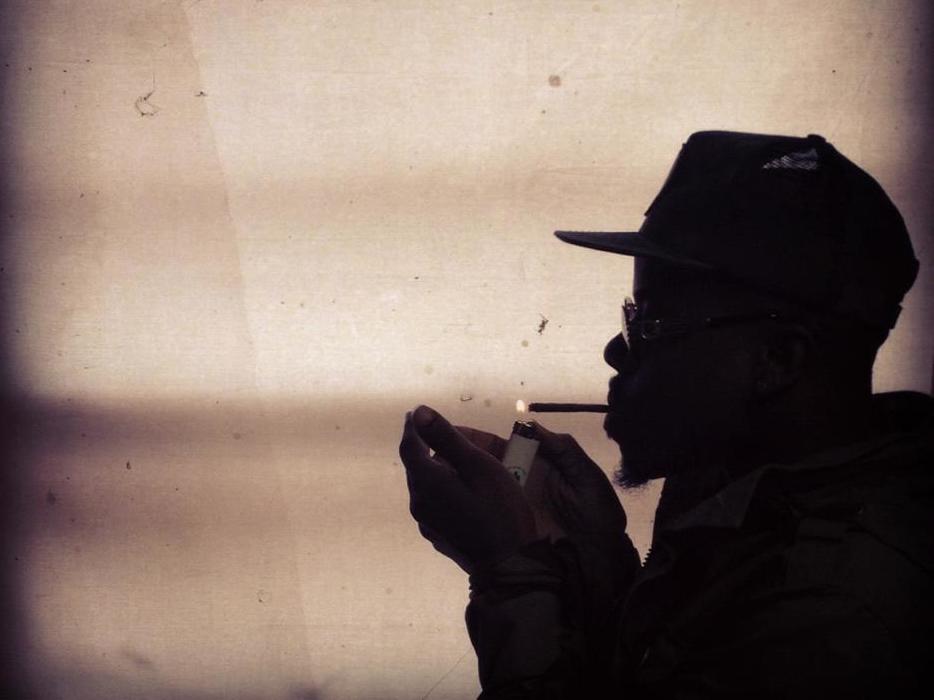
If you want to show a skeptic that southern hip-hop is far richer and more diverse than the monochromatic trap palette dominating commercial radio (which should be a truism at this point, but, of course, isn't), you could do far worse than North Carolina's Elevator Jay as far as beacons of great rapping below the Mason-Dixon go.
Jay's style descends directly from some of the south's most revered acts, but his influences aren't geographically gated.
"My biggest musical influences were the Dungeon Family, UGK, Devin The Dude, DJ Screw, Hypnotize Minds and Uncle Luke to name a few," Jay told me via email earlier this month. "Growing up in the Carolinas, southern rap is really all that was around me, so therefore it influenced me the most. I also grew up listening to a lot of R&B, Soul and West Coast rap. So don't let that small list of artists fool you, those were just some of my favorites. There's plenty more that paved a way for me to do what I do today."
While Jay will likely draw comparisons to Big K.R.I.T. (another great torchbearer for the sounds of the third coast), Jay seems perennially at ease or at very least rarely more than superficially bothered by life's ills. In this way, he owes his philosophy both to Devin The Dude's stoned existentialism and a certain slowness that accompanies the sticky heat and thick air that hang about sweeping, still stretches of land (and not to mention the rib-sticking, delicious cooking)—southern bedrock.
"In a nutshell, Charlotte is a big city with a small town mentality," says Jay of his hometown, one of the less celebrated in the southern hip-hop's geography. "It takes damn near an hour to circle the i485 loop around the city, but at the same time, everybody knows everybody here. If you don't like moving too fast, but not too slow either, this is the perfect place to be. One minute you can be in the city, the next minute you can be in the country."
While he's still working to carve his own path with the tools of the past, Jay's music certainly makes for compelling listening, an artist well worth watching as he determines how to forge inspiration with his own identity. (From "5 On It: Test The Time," October 2016).
Hare Squead
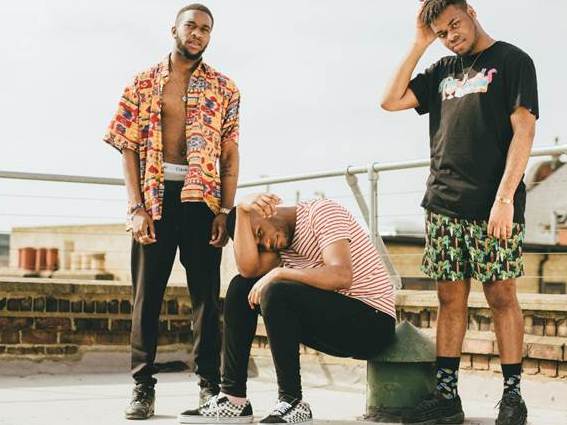
Hare Squead became P&P favorites in the back half of 2016 on the strength of a strong run of singles that introduced eclectic concerns and current ears of the Irish trio. Their second single (and still my personal favorite) “Long Way To Go” tipped us off to their eclecticism, energy, and strong sense of style in the service of substance.
Channeling classic house soul through the lens of a hip-hop segment obsessed with buoyant club rhythms, "Long Way To Go" lives in the lane opened by GoldLink without feeling either strictly derivative or even competitive—it can exist and stand out comfortably in a world where Soundcloud variants tend towards the anonymous. While coloring within the lines of the Future Bounce sound outlined by Soulection, "Long Way To Go" has an electricity and sheen that separate it from the pack; polish puts a spotlight on the Hare Squead's particularly hopeful philosophy, making the standout track in their nascent discography feel like a dance floor hymn. (From "5 On It: Test The Time," October 2016).
A Boogie Wit Da Hoodie

Back in June, my friend Tim Larew and I met up in New York to do what we've so often done in the last three years that we've known each other: Discuss our dreams, our well-being, and which new hip-hop artists were occupying our time and which were about to blow up. This sort of speculative sport had been our life blood since we’d met, partially fuel for our nascent careers and partially the sort of talk basketball fanatics engage in when tracking high school and college prospects on their way to the pros. It’s often wildly theoretical conversation, occasionally stitched into something compelling from context clues, good taste, and the odd bit of hard information.
Tim mentioned a kid named A Boogie. He skipped through a bunch of Twitter and Instagram accounts, all sporting some variation of the rapper's name, most of dubious origin. He played me "My Shit" and told me how he heard it playing everywhere in his neighborhood (Tim lives in Harlem). One listen to “My Shit” and I was immediately compelled—though admittedly the surrounding story and confusing mystery interested me more at the time. He gave an in depth, early look at A Boogie a week after we had that conversation in 5 On It.
Between the time Tim and I had that conversation and the time I left New York to come back to L.A., I heard "My Shit" seemingly everywhere I went in Manhattan. Blasting out of cars. Played repeatedly at bars. Rattling in my head as I searched for a solid stream on YouTube. I fell in love with it, infuriated that I couldn’t listen to on my iPhone since I’ve abandoned my MP3-ripping days and I’m now handcuffed to Spotify and Apple Music (I listened on YouTube all the way up until having to turn on airplane mode).
While “My Shit” didn’t become quite the hit Tim and I felt and hoped it would, it signaled the rise of a bright young star in a New York rap landscape that seems to be reviving slowly and steadily. (From "5 On It: Tiptoeing On The Razor's Edge," June 2016)
Quadry
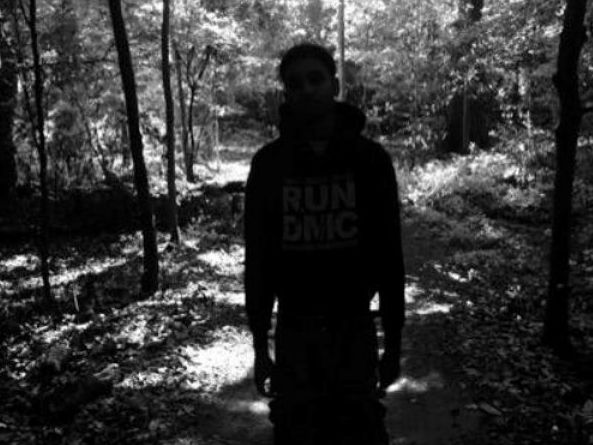
Though Baton Rouge, Louisiana doesn’t have an ostensibly unified scene, it’s the home of one of rap’s new heavyweights, Kevin Gates, and a number of promising up-and-comers, notably Caleb Brown (who’s been featured regularly in 5 On It), NBA YoungBoy (another 5 On It entrant, and someone you’ll be reading about again shortly), and former Daily Discovery Quadry (among others, of course).
Quadry’s debut project America, Me proved one of the stronger under-the-radar rap releases of 2016, a smartly realized display of young rappers keen observational skills and emotional depth. America, Me succeeds on impressive cohesion, a combination of Quadry’s consistently sharp raps and primary collaborator Tev’n’s production, a warm mixture of classic boom bap sensibility and modern mixing and textures. Some might remember Tev’n from his self-titled mixtape several years back, a raw, compelling blend of pained, soulful vocals and sparse electronic tracks that felt ahead of its time and has since been pulled from Soundcloud. Tev’n lends rich soundscapes to Quadry’s observations and narratives, most effective on songs like nostalgic “Che Guevara,” propulsive “WeatherMan Rock” (which feels like a lost entry from a Goodie Mob album), and vulnerable late project highlight “Rashid’s Law [Act III].”
“Rashid’s Law [Act III]” serves doubly as an encapsulation of America, Me’s sound and Quadry’s particular honesty and worldly wisdom, delivering an unusually mature sentiment for a modern hip-hop song (or a current song by a man, period). “Please, please Rashid, give her what she need/She couldn’t get it from me,” he raps on the song’s hook, succinctly summarizing an account of a lost love and a transmission to her new boyfriend in hopes he treats her well and fulfills what Quadry couldn’t. Incisive and introspective, “Rashid’s Law [III]” is the sort of song that feels like it could be an early signature if Quadry goes on to have a lengthy career of any measure—a reasonable bet if his ability to craft a comprehensive vision proves a defining characteristic rather than beginner’s luck. (From "5 On It: From The Furnace," July 2016)
NBA YoungBoy
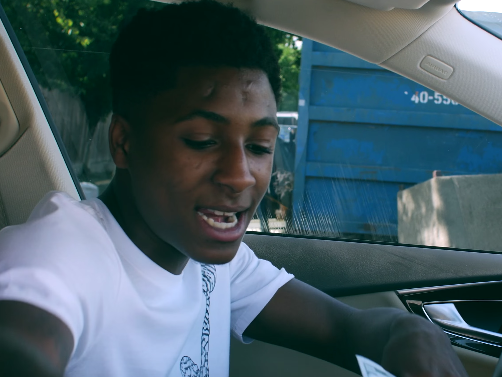
During 5 On It's existence, different city's have emerged as surprise torchbearers full of talent. Milwaukee pops up constantly, a hotbed for rappers as varied as they are plentiful—IshDARR, WebsterX, Mic Kellogg, Reggie Bonds, Bankx, among others. Boston proved tight knit but mighty with the arrival of Cousin Stizz and Big Leano. Toronto proved to be more than Drake and the factory that keeps Drake running with rappers Lais, John River, TOBi, and the New Wave Order crew. As mentioned above, Baton Rouge has now jumped onto the list, a hotbed for talent that isn’t just a mere company city to more famed New Orleans.
In only a year of releasing music, 17-year-old NBA YoungBoy (now YoungBoy Never Broke Again) has proven to be one of rap’s more compelling and embattled young guard, a passionate rapper fighting through legal repercussions to a life that fills his music with harrowing detail and pained delivery.
“38 Baby” was the song that initially sparked my curiosity. ”Everybody under the skies, man they schemin,'" YoungBoy raps in its opening bars, encapsulating a resigned understanding of Baton Rouge's daily perils (and an implicit acknowledge of the cold remove and violent resolve necessary to survive in such uncertain conditions). YoungBoy's familiar drawl recalls just how important the presence of Louisiana rappers has been over the past two decades—from Juvenile and Master P through Lil Wayne's reign onto Kevin Gates quiet ascension to stardom—and makes it seem all the stranger that there's never been a unified scene in either of the state's major cities, New Orleans or Baton Rouge. YoungBoy raps with charisma and calculation in equal measure, his voice bearing the invisible weight of someone who's already lived more than most adults before exiting his teens.
While “38 Baby” was the crowbar that opened the door, “Gravity” (which you can hear below) has proven one of the most compelling entries in his 2016 catalog, a look at the bedrock that inspired YoungBoy’s musical dreams and the conflicted life of a young man not yet old enough to vote or drink, yet already making impossible decisions some adults never have to face. It’s a great window into his potential as a rapper and a reminder of the great power of gangsta rap. (From "5 On It: Can't Rewind," August 2016)
Sampa The Great
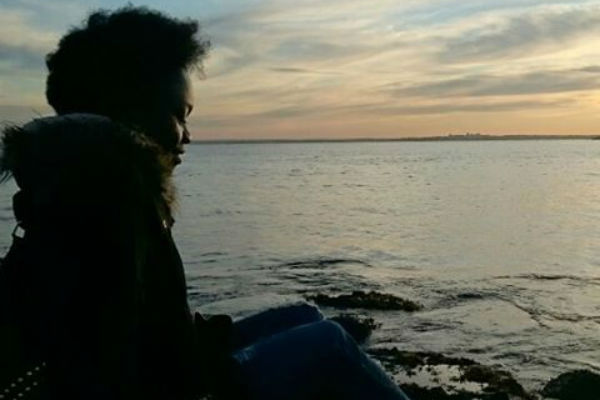
Zambia-born, Botswana-raised, and Sydney-based artist Sampa The Great raps with a sense of tremendous purpose. Even when she settles into mellower moods, her words and diction suggest resolute selection, every syllable chosen for meaning or aesthetic or both. Hers is the sort of polished craft that takes root in extensive study and practice, a sharpening of skill that masquerades as effortless ability.
Of course, talent of this order undoubtedly comes in part from a place that can’t be taught or molded, but songs like standout “Blue Boss” suggest a perceptive, precise practitioner, an artist with enviable attention to detail. Listening to Sampa rap is a joy in itself, a pleasure of technique occurring before you begin to unpack the meaning behind appearances. Sampa released a great deal of music in 2016, all of it worth exploring, but “Blue Boss” provided an early summary of her skill and modus operandi, a snapshot of a rapper from whom the medium was the message—great rapping was as important as what was being rapped about, and helped state the case for the young emcee’s eponymous greatness. (From "5 On It: The Start of Something," January 2016)
FXXXXY
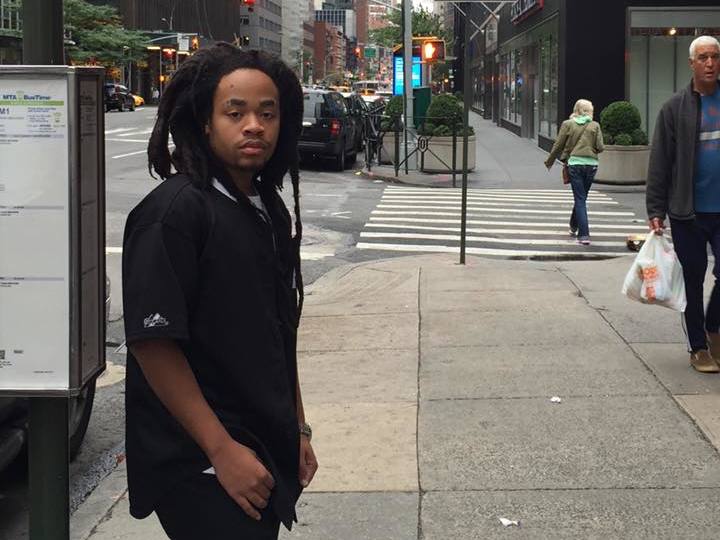
FXXXY first arrived as an enigma, a faceless rapper with lengthy Bandcamp releases sporting oddly named songs that seemed to speak to a coded language belonging largely to its creator. Over the course of 2016, the Dallas rapper revealed himself as an unusual, deeply compelling new talent, a hip-hop student and omnivore pulling influences from different corners of the genre’s history in service of creating something novel and well worth following.
“Ever,” a collision of fascinating influences, remains the creative standout from his emergent year. Like mixtape-era 50 Cent covered in codeine, “Ever” implicitly and overtly references Notorious B.I.G. and Junior MAFIA with its dark spin on classicist New York hardcore. FXXXXY’s flow channels elements of nemeses Biggie and Pac, while throwing in echoes of Devin the Dude’s knack for daily detail, and a desperate energy that seems autonomous. “Ever” mesmerizes because it references so many things but sounds like so little else coming out right now, driven by autobiography imbued with back-against-the-wall energy. (From "5 On It: Out Of My Head," February 2016)
Tierra Whack
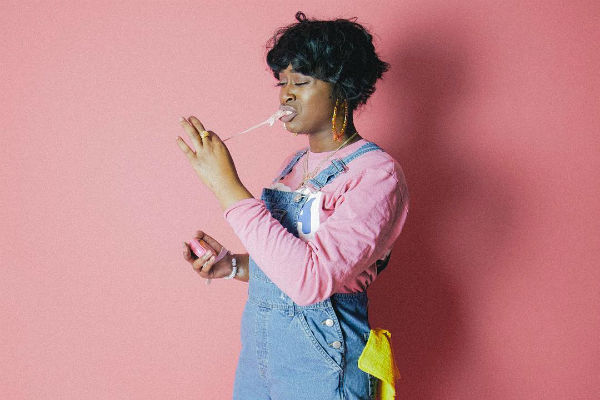
Philadelphia’s Tierra Whack raps her ass off. There’s little else you need to know before diving into “Toe Jam,” a scathing exercise in prodigious, varied rapping that exudes attitude like so many songs that outwardly espouse swagger and excellence their performers might not truly possess. “Toe Jam” is the kid one the blacktop who can dribble circles around everyone, turning a game of basketball into an attempt to one-up herself on every play—it’s a challenge to be the best that comes from within, rather than from without.
On “Toe Jam,” Whack exhibits the sort of skill that piques interest with its possible applications across wide assortment of ideas. For now, it’s more than enough to hear her rap her ass off. (From "5 On It: To Thine Own Self Be True," April 2016)
JPEGMAFIA
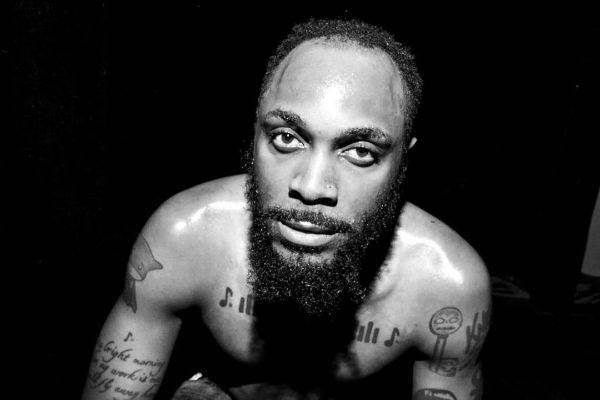
Back in March, I spoke to JPEGMAFIA about his searing, dizzying 22 song project Black Ben Carson. At the time of its release, its absurd name referenced presidential hopeful Ben Carson, making light of a country that could produce candidates such as Carson and Donald Trump, then a seeming long shot for the republican nomination, let alone the presidency of the United States. What a difference nine months make. In the wake of the election and the virulent hatred, bigotry, and misogyny it unearthed for public consumption (or that it made comfortable for those hiding it in a “politically correct” world), JPEGMAFIA’s explanation of BBC from our initial conversation feels particularly resonant and important.
“Black Ben Carson is a lot to take take in,” he said. “Theres a lot going on musically and lyrically. It’s not something I would imagine someone casually put on in an elevator or bat-mitzvah (unless you want to). So depending on who you are as a person, your reaction will vary. You might feel offended, you might feel empowered, you might feel inspired. You might feel like you want to kill me. I’ve had people send me strange emails saying that, because I imagine to an outsider I might seem like a sociopath or someone with no morals or filter. All of these things may be true and all of those reactions are fine. It’s the reason I make the kind of music I make, because I want a conversation to be sparked by the things I bring up. I want to bring the taboo to the forefront with no filters or cushions. I’m unapologetically black just like Varg Vikernes is unapologetically white. Respect me. I don’t like Varg, but I respect the fact that he’s not a pussy about his racism. When I see him I’m still gonna put his fucking head on a stick. But I respect his firm stance on his beliefs, even if I agree with none of them. I want to be a vanguard for these types of discussions in places they wouldn’t normally be talked about. And for my niggas out there, I just want them to realize that we have no friends out here, nobody. When I was in the military I went all over the world, and the one constant in every different place I visited was that they all thought they were better than black people. Niggas need to know that people hate them and accept it, embrace it, and work with it. I hope after they listen to Black Ben Carson or any of my other tapes, they do their research, learn about themselves and be cautious.”
Echoing recent sentiments about the possibilities of art in Trump’s America, JPEGMAFIA also shared salient thoughts about music’s political possibilities that, with any luck, will prove prescient.
“With the tools we have now we can spark change in minutes,” he said. “Look at Bernie Sanders. Before, he was the underdog and not projected to make it far at all, certainly not to win the New Hampshire caucus with a favorite like Hillary Clinton. But because of musicians support and the youth, he’s now neck and neck with her in most polls. I watched that change happen. The Black Lives Matter movement is having a huge effect of society today and it will be in textbooks later down the line for sure. The soundtrack to that movement is To Pimp a Butterfly. That means something.” (From "5 On It: Get Down Or Lay Down," March 2016)
K$ace
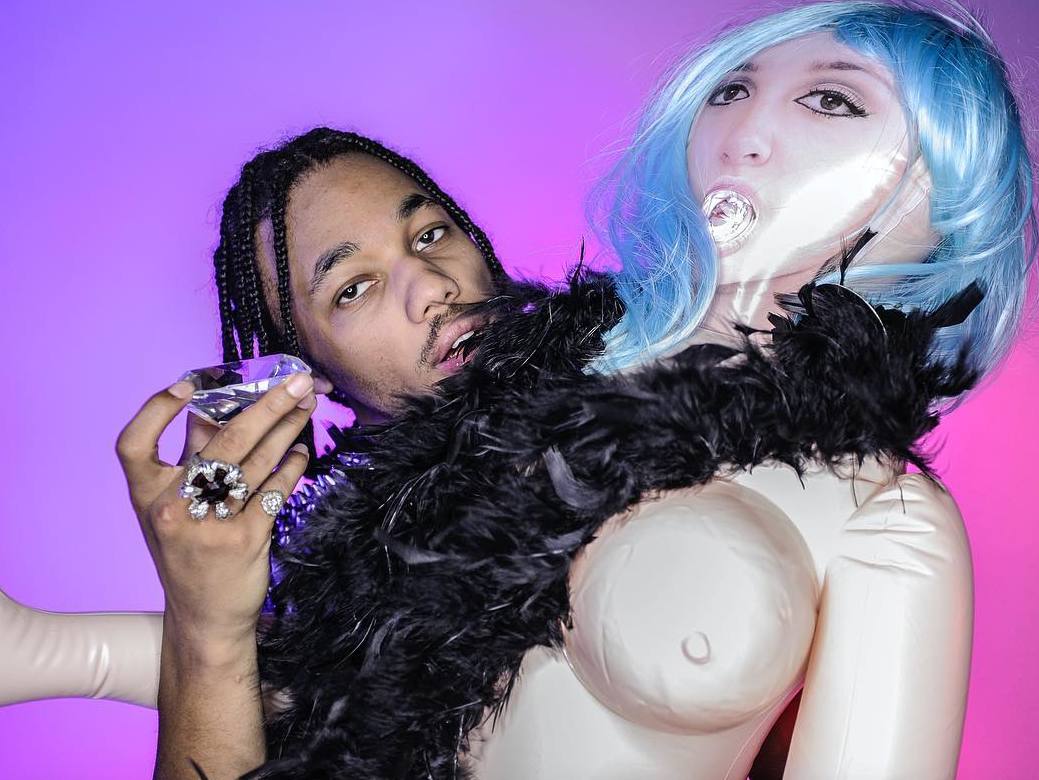
I have no idea if New York-based rapper K$ace knows his hip-hop history and, for the purpose of enjoying his gleeful single "I Might," I couldn't really care less.
He might know every Big Daddy Kane lyric, he might not know Big Daddy Kane exists.
He might know that hip-hop's roots sprouted from 1520 Sedgwick Ave., he might not.
He might be an encyclopedic historian, and, you guessed it, he also might not.
The conversation about whether or not young rappers should know their history is sort of a silly one: We should all know our history, and none of us have that much of an excuse since the breadth and context of recorded music is at our fingertips at any given moment thanks to Spotify, Apple Music, Wikipedia, AllMusic.com, and Discogs.com. That said, knowing your history isn't a prerequisite for being able to make great, enjoyable rap music—in the same way that being a remarkable technical rapper isn't a requirement for being a memorable, complete artist. (For the record, I could have easily reached out to K$ace to clarify his understanding of hip-hop's history, but that's not really the point either—unless the point is to simply create more divisive headlines about new vs. old school).
There are purists that will probably hate K$ace's "I Might," lumping it in with the exuberant, playful, and often decidedly non-technical music of artists like Lil Yachty, Nessly, and D.R.A.M. Those purists should probably be reminded that before there was boom bap, there were dudes dressed as cowboys, aliens, and ancient Egyptians rocking parties of teens who just wanted an escape from the world, but that's neither here nor there. "I Might" is pure fun and joy, a silly, catchy two and a half minutes about spending money, getting fucked up, smoking cigarettes in Ubers, and...that's about it. It's not particularly complex in its subject matter; it's purely enjoyable music meant to be blasted in bars and clubs, at BBQ's, in Ubers, and anywhere someone might want to run up a check, no matter the size of that check.
Chill out. Turn on "I Might." Have a good time. It's Saturday.
(Reprinted this exactly as it appeared in September’s "5 On It: The Only Time Is Party Time"; I know K$ace better now, I still have no idea whether he knows anything about the history of hip-hop, but I know he’s a wickedly smart young artist who’s having a damn good time making his music and traveling the world; bless him for that).
ANoyd
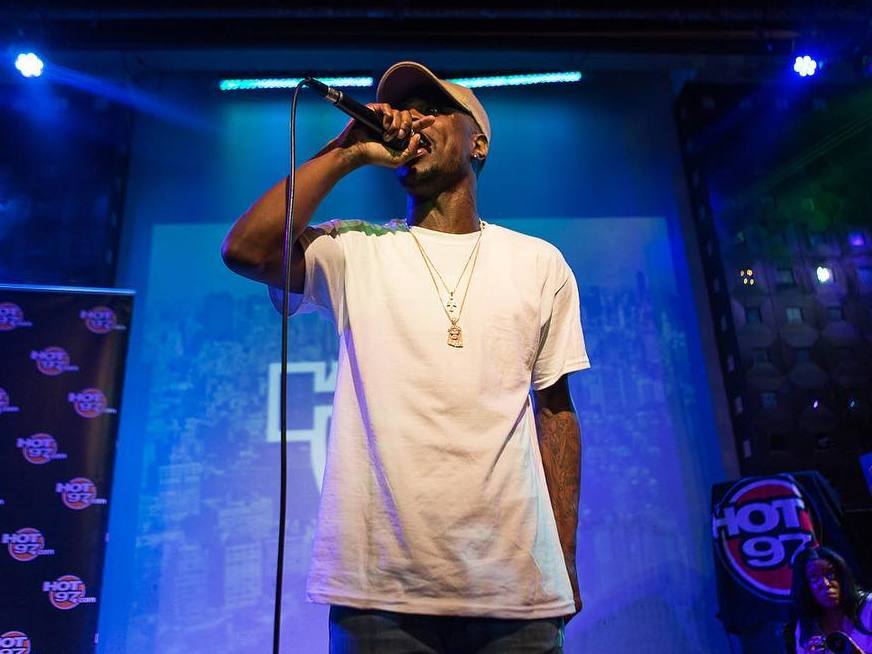
Rap is one of the few musical genres that lends itself readily to sport in craft (you can throw virtuoso musicians of all stripes into this conversation, but there aren’t too many public piano battles or guitarist beefs these days). Rappers like Connecticut’s ANoyd seem forged from the crucible of competition, whether direct or by proximity.
“A big part of my style also comes from battle rap,” says ANoyd. “The reason I punch so heavy and put so much thought into making a clever line as far as word play and metaphor is highly influenced from battle rap.” On “It’s Different Now,” he raps with both heart and impressive calculation, at times mirroring J Cole at his most technically prodigious, at times rapping with the passion of a Meek Mill and the technique of a Nas (whose voice kicks off the song in the form of a sample). “It’s Different Now” puts ANoyd’s considerable control of rhythm and cadence in service of impassioned expression.
“I want people to feel my pain,” ANoyd continues. “I want people to know my story and know that anything is possible with hard work and prayer. When people hear my music I want them too hear the hard work I put into every song, cause I treat every one like a new born baby. When you listen to ANoyd I want you too hear and see my perspective of life, cause there’s a million rappers rhyming on beats. This is just my way of doing it. My story.”
ANoyd has released a lot of music in 2016 (which you can check out here), but “It’s Different Now” still feels like the strongest point of entry, a mission statement that serves as a kind of key for his entire catalog. (From "5 On It: To Thine Own Self Be True," April 2016)
T.Y.E.
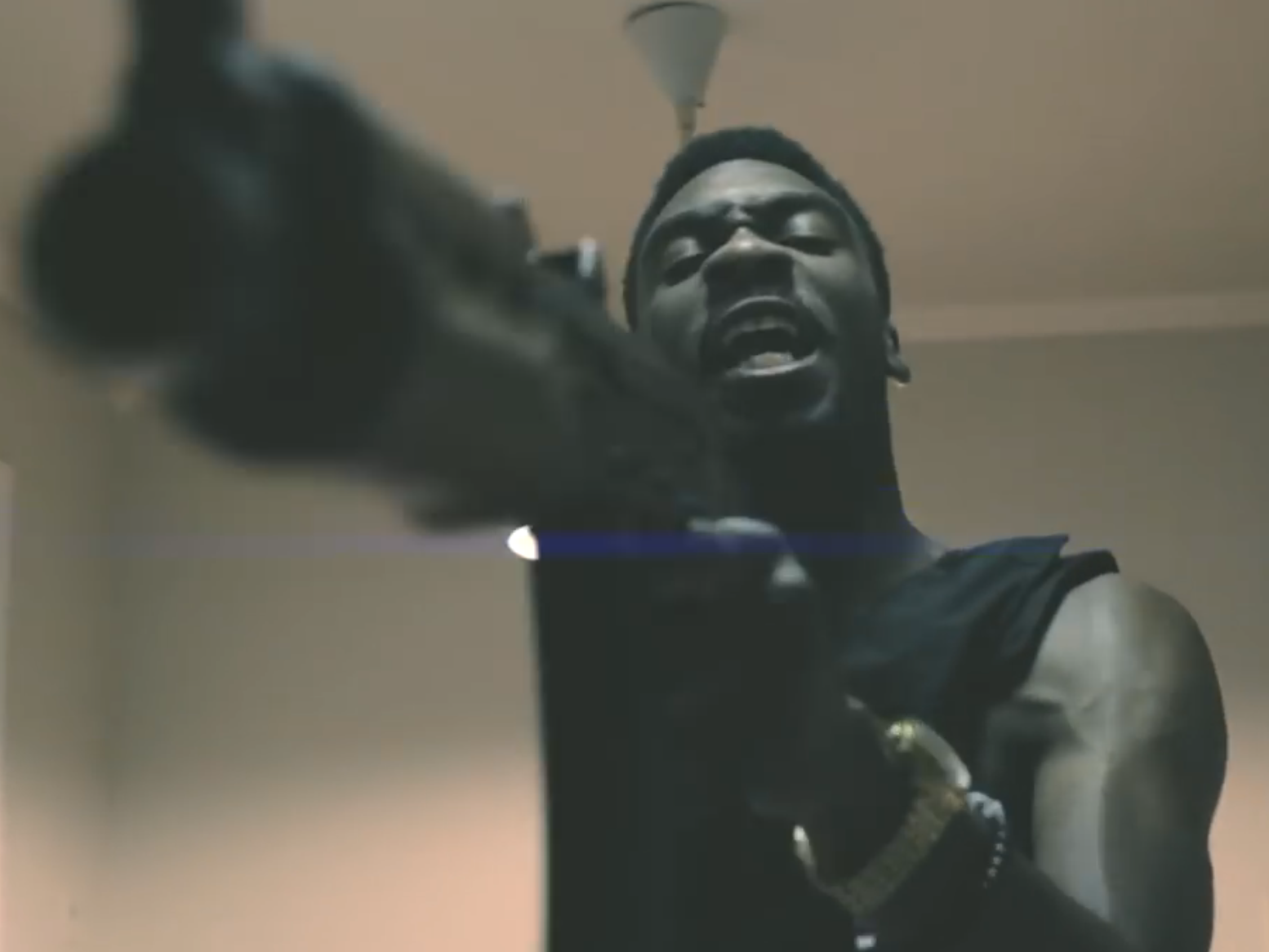
Last year, 22-year-old Dallas rapper/producer was diagnosed with bipolar disorder. This detail isn’t essential to enjoying his music, but it is one of a number of intriguing facets giving deep context to songs like standout “La La Land.” In short: T.Y.E. (born Tye Harris) grew up surrounded by music (his father produced for Bone Thugs-N-Harmony and Dianne Warren; his brothers rapped and introduced him to the recording process at an early age) before discovering a gift for opera singing and earning a scholarship to Abilene Christian University. In his time there, T.Y.E. battled virulent racism and hatred, hallmarks of a West Texas community which, as he puts it, was "not used to a n*gga who could sing with the best of the white people.”
You can read T.Y.E.’s full story here, but the above is as much as you really need to know before diving into “La La Land,” a dizzying six minutes that grapples with the fright of his waking hours and the violent swings of that typify manic depression.
"'La La Land' was more of an emotional thing...more trying to let you know about being bipolar and how quick things can turn," he says. "It came from trying to kill myself, knowing that 'La La Land' is supposed to be a better place than what I'm in right now." Ethereal electronic atmosphere builds to booming 808's and an almost Death Grips-like sonic assault, all while incorporating T.Y.E.'s striking singing and visceral rapping. It's the kind of dizzying song that could scare off casual listeners. It's as complex and densely layered as T.Y.E.'s story, an abrasive listen demanding repeat plays for full digestion and decoding. (From "Mind Playing Tricks: Dallas Rapper T.Y.E. Battles Bipolar Disorder and Defies Expectations," December 2016)
UG Vavy

Chicago rapper UG Vavy has a gift for melancholic, melodic rapping that makes for hypnotic listening on "Gwap," the sort of song that sticks in your head after one listen and pops up in the background radiation of your brain when you least expect it. Vavy's style and inspiration spring from his omnivorous attitude towards music.
"Recently I've been inspired by all the new artists who’ve released projects this year," says Vavy. "I literally listen to everything that releases because you never know what new ways people may find to do things. I've also been digging back and listening to older songs I loved as a kid, from hip hop (Lil Wayne, Ye), 90s R&B (SWV, Mary J), and even reggae music (half pint, Wayne Wonder, etc). I've noticed that you can be inspired by anything just put it in your way and make it appeal."
"Gwap" is one of a series of singles Vavy has released over the past year, a piece of his very modern strategy for attempting to effectively release music and cut through the clutter.
"It's not time for a full body of work in terms of me, I have to be at a certain level before that time comes," says Vavy. "Honestly, I feel like music is releasing at such a rampant pace and it’s a lot. Even for me, an album can drop and be forgotten about in a month but 10 years ago the projects could hold you for a while. Attention spans are getting shorter and shorter so I rather have a moment with a single and kind of show people like 'hey listen to this for now.'"
This mission to seize attention ranges from Vavy's roll out plan to his art choices.
"My homie Reuben and I thought it would be cool to have a running theme to set my work apart from the others," he says. "That way when people are scrolling they know for a fact it’s me and new music. We often let the song dictate the imagery and sometimes the image chosen is a metaphor for the songs title or theme. It's kind of like Ye when he dropped albums in the past, it was always an adaption of the bear which was cool and showed progression."
None of that strategy would particularly matter were songs like "Gwap" not mesmerizing in their unusual way. (From "5 On It: The Only Time Is Party Time," September 2016)
Yonkwi
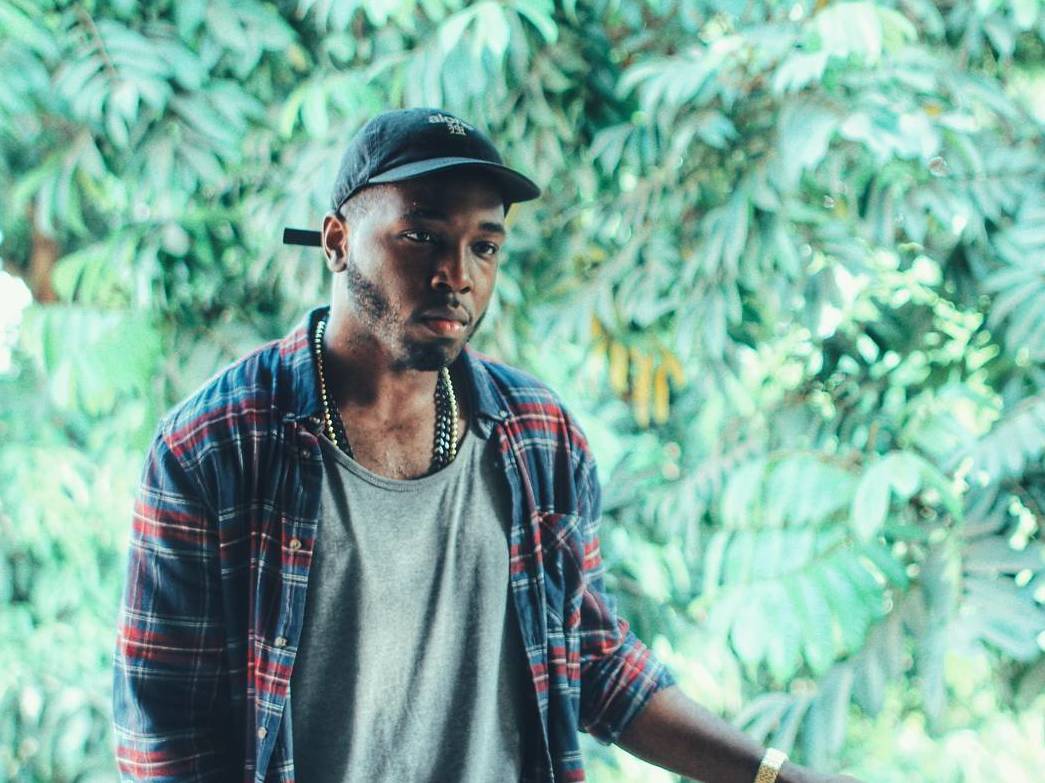
One of hip-hop's less vocally celebrated qualities is its omnivorous absorption, acceptance, and repurposing of other culture. Part of rap's power is its osmotic malleability—beats and rhymes transcend language, giving young artists across the world a framework for celebration and expression of plight alike. It's a musical form unlike any other, built on notions of sampling and hybridization of sounds and ideas as a way to create new communities and aesthetics.
Just as hip-hop makes rich territory for those looking to strip mine new ideas for polished pop, so too does it resist such theft through evolution, providing fertile soil for those looking to explore their origins and identities via what can best be described as a modern folk tradition.
New York rapper/producer Yonkwi gives himself the following billing on Soundcloud:
"Yonkwi is a Cameroonian creative mind who resides in NY. Since his birth in Tokyo, he has been inspired to make dope content. Now, in his room, he produces, raps, and sings his own music to inspire his home of the Undé and his peers."
Single "Ripe Plantains" feels like filtration of existing culture in the service of identity discovery as well as resistance to the claws of purely commercial interests. It's fun and catchy, but it avoids the familiar and treacly—it's like a hidden treasure that doesn't feel manufactured by those trying to guarantee the delight of the new. (From "5 On It: The Only Time Is Party Time," September 2016)
Desi Mo
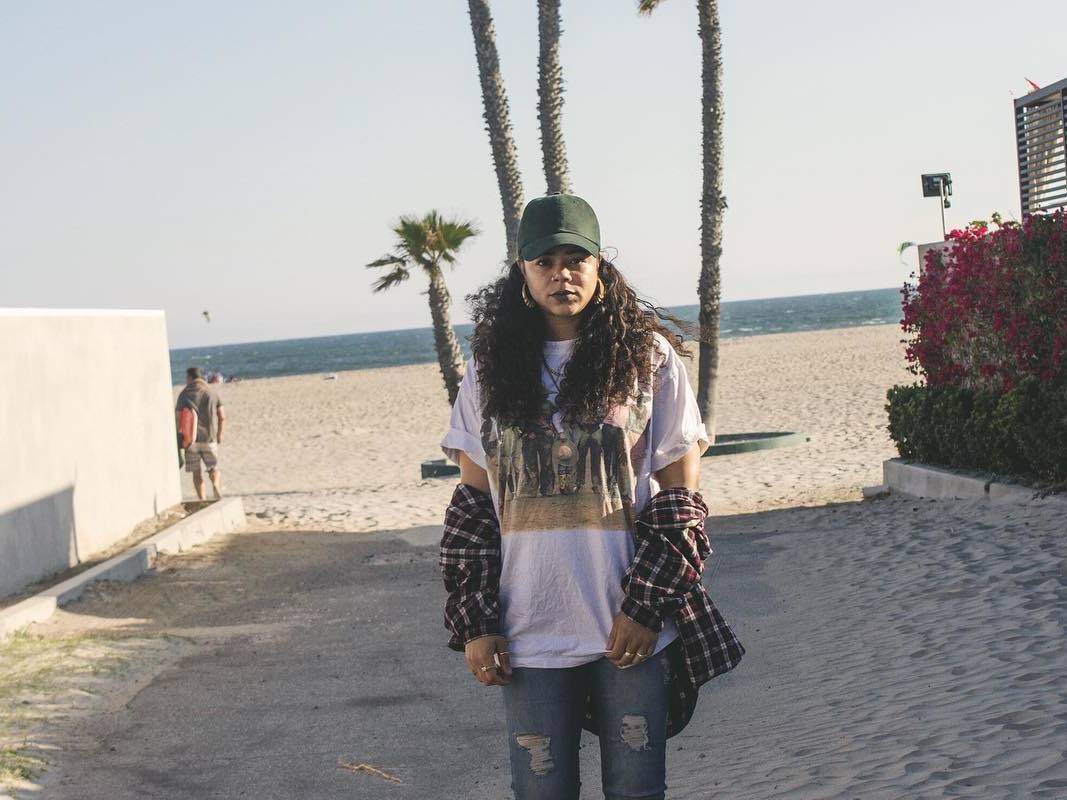
You may recognize Desi Mo’s name from the credits of Vince Staples’ Summertime ’06 (her voice plays sharp female counterpoint to Staples on standout “Get Paid”), but you should get familiar with her as one of the strongest young rappers coming out of the Los Angeles area. True to form, Desi’s THE PAWPRINT is an excellent collection of latter-day L.A. gangsta rap, ride with attitude and incisive street observation.
Desi’s music presents a version of femininity often missing from rap music: Strong and confident, sexual while avoiding excessive explicitness and self-objectification. THE PAWPRINT combats hip-hop’s misogyny by bluntly presenting a portrait of a young woman in control of her image and message, not by purely critiquing said misogyny. It’s a perspective worth noting and one that hopefully pops up increasingly in the work of young female rappers (we see it also in songs and projects from Kamaiyah, Little Simz, Tasha The Amazon, Sampa The Great, and Tierra Whack—a list of talented young women that certainly isn’t exhausted).
THE PAWPRINT exists as a testament to a sentiment Desi expressed when we spoke last week for my piece on the artist’s burden in trying times: “A lot of people may not see [the world] from your perspective, so when you tell it, it gives that listener a chance to see it in that way.” Her story and truth form a political statement in their very existence, a window into a world that listeners might not expect or know exists. It also doesn’t hurt that Desi can rap like a motherfucker, as PAWPRINT opener and highlight "FIRST 48" proves in a tidy two minutes and seventeen seconds.
Desi also served as a contributor to my piece about artistic responsibility from this past July, offering an important (and importantly non-prescriptive) set of ideas for young musicians looking to make an impact without wanting to strictly be thought of as activists: "If you’re not out protesting, the way that you’re presenting this information to somebody who’s listening can make them go out and do it, can make them reconsider the way they’re living their own life.” (From "5 On It: From The Furnace," July 2016)
Jhon Myquale

Milwaukee-raised, Queens rapper Jhon Myquale raps with great technical skill and understands his work as part of a spectrum that could help push larger scale discussions.
"I just had this conversation with a close friend," says rapper Jhon Myquale (pronounced "mike-well") over email when I ask him if he thinks this swing looms on hip-hop's horizon. "I definitely feel so. Especially with all the political distress people across America are experiencing—people across the world. People need a voice and a way to resist. Music has always been the tool. Fela says music is spiritual. It's true. Then we'll probably return back to the more party oriented records haha. Music happens in cycles, I've witnessed mad trends. History only repeats. When you think about it, hip hop isn't old at all. What'll be more impressive is artists focusing on the musicality. That's what I'm most excited for."
Raised on the music of Erykah Badu, Kanye, A Tribe Called Quest, and Outkast, schooled by night life experiences, Myquale’s rapping comes from a school of rappers like J. Cole (at the highest level), Cozz, and ___, who showcase a certain technique passed down from golden era greats (even of some of their contributions are apocryphal or only made vaguely correct through the haze of memory).
"Queens had me on my dancehall wave," Myquale says, "underaged, dutty wining somewhere in a crowded bar with a Nigerian girl asking 'weh da bad gals dem?'"
Records like Myquale's sprawling "Melvina," a sprawling freestyle in the spirit of Lil Wayne's Dedication-era beat jacking and song reinvention, showcase the Chicago-based rapper's palette and technical skill.
"I decided to pick my favorite songs and just freestyle over them, on my Dedication tip," says Myquale of the nearly 14 minute long song. "I recorded it in one night, all the way through. The girl I was dating at the time, I had her say my name and do ad-libs. I pretty much handled the rest. Definitely Wayne inspired though. I wanted to close that chapter in my life. I needed to write about it first. Melvina was rough. One reason why I moved to Queens."
Myquale's rapping moves across tracks with a sort of internal momentum, words and syllables intertwining with those before and after, giving verses a hypnotic sense of forward motion. If "Melvina" is a bit much digest for first time listeners, latest release "Big Foot's Blues" tops a MNDSGN beat (previously used on Doja Cat's woozily wonderful "Nunchucks") into a dizzying display of densely coiled rhymes. (From "5 On It: Degree and Kind," November 2016)
Orgena
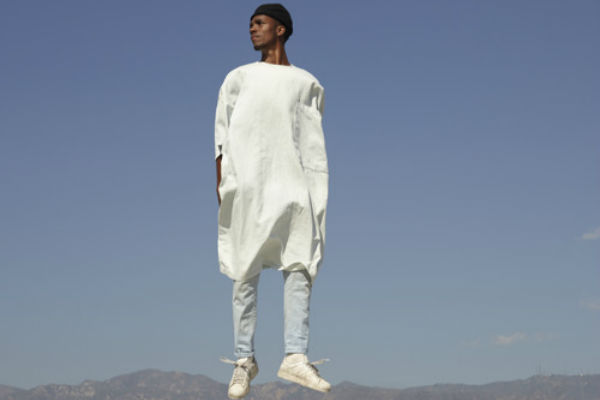
Pasadena rapper Orgena’s “Vysine” is one of those Soundcloud gems that raises the best kind of suspicion—ambitiously constructed, polished, and pointing to a wealth of talent already taking flight. “Vysine” feels like the tip of the iceberg, a small peak suggesting a far greater depth beneath the surface (it doesn’t feel like a fluke, but rather entree into a world yet unshared). Its meandering lyrics—a blend of inspirational introspection and political observation rooted in personal reflection—work because of Orgena’s gift for casually melodic rapping; his range invites listeners to sing along while his technical ability might make aspirants in the audience hard pressed to copy him word for word. “Vysine” presents a rapper still figuring out a precise message to hang his hat on, but doing so with entertaining style and aplomb.
He’s only shared a few songs since “Vysine” and none quite as bright-burning with potential; he still seems impressively rife with variable abilities, an exciting talent worth continuing to watch. (Given the song’s pragmatic political leanings—in spirit, it echoes the title of author John A. Williams‘ The Man Who Cried I Am—feels worth noting and likely not a coincidence, that “orgena” is “a negro” backwards and also the name of a play by Louis Farrakhan). (From "5 On It: Get Down Or Lay Down," March 2016)
Garrett
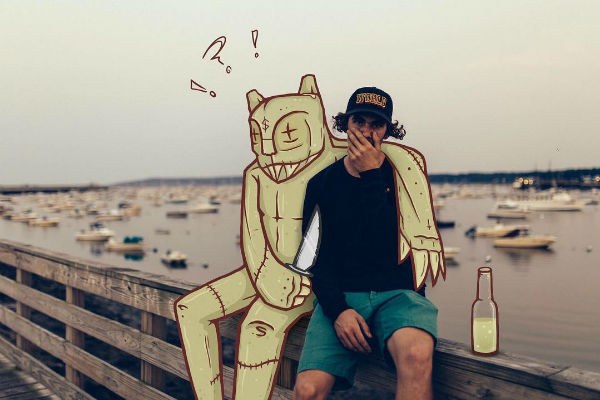
Boston rapper Garrett’s “Dairy Queen” proved a perfect summer soundtrack. In June, I returned home from the perpetual summer of Los Angeles to the very real summer of New York, a time when winter’s hoary head had been beaten back by spring and it was finally time to drink parks and run around the Lower East Side at night (or whatever the hell I did before I moved west).
I spent the first two weeks of June in New York. Summers in New York tend to overwhelm, heat and humidity turning concrete streets and glowering skyscrapers into a city-wide microwave, as if Elon Musk fulfilled his secret destiny as a Bond villain and unleashed the power of the sun on ten million unsuspecting citizens. June can go either way. Bliss or torture. Pretty and pleasant or flame-tickling circle of hell.
The coin landed on bliss during my stay. Save for a bit of rain, the summer gods (or a merciful Elon Musk) granted New York with a temperate two weeks—t shirt weather during the day, sweater weather at night.
In the midst of a most pleasant trip, I received an email from Garrett containing “Dairy Queen,” prime listening for wandering the streets of New York in the pre-oppressive days of summer. Garrett’s knack for infectious melody, his goofy, disarming sense of humor, and his feet-in-the-gutter-head-in-the-stars worldview make a great complement for producer Kal Banx’s production, a combination of debris-filled digital synths and old school rap drums. “Dairy Queen” is a lazy summer day personified. (From "5 On It: Shades of Summer," June 2016)
Oyabun
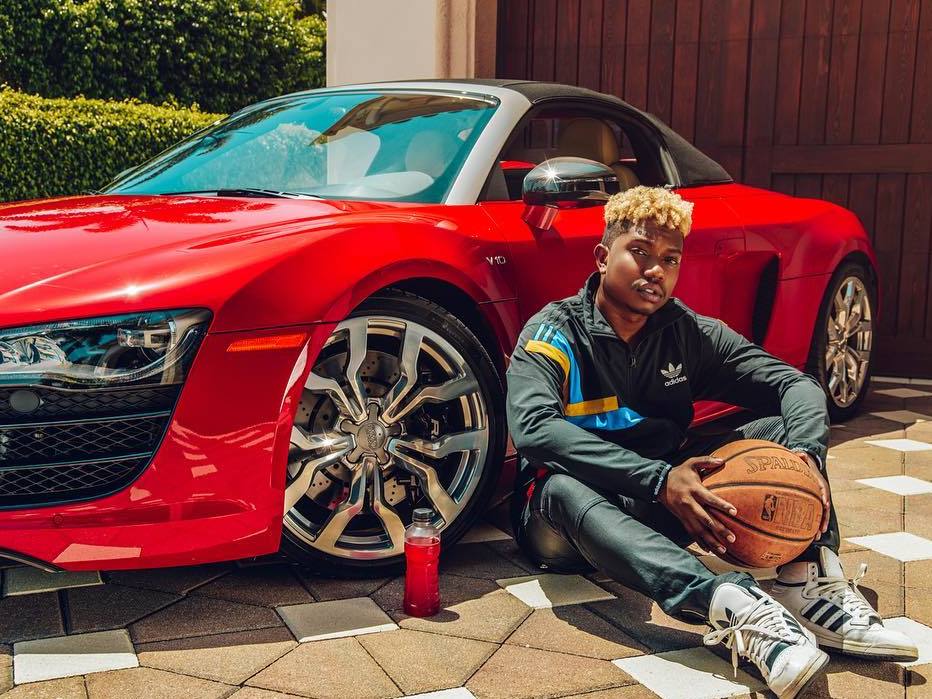
When Fetty Wap’s runaway 2015 hit “Trap Queen” first started to bubble, I didn’t quite get it. Fetty’s wild, warbling melodies hooked me, but I didn’t think much about the song’s attraction beyond the odd magnetism of his voice.
In the middle of 2015, a friend who worked with the song’s producer told me, “I knew it was going to be a big hit because it was a trap love song. No one had really done that yet.”
If “Trap Queen” is sunny summer love, South Florida rapper/singer Oyabun’s “Mona Lisa” is romance in the shade, a Bonnie and Clyde tale told through classic art metaphor. Darkness underlies “Mona Lisa” and “All I Need,” another stand out from Oyabun’s small catalog that draws on the classic hustler’s paradox with a casually sharp eye towards the wider catch-22 of American capitalism (“Money is the root of all evil/But I need it to free all my people”). Oyabun’s gift for melody—mournful monotone drone punctuated by sharp pockets of rhyme—makes for hypnotic listening, suffocating romance and hustling alike with palpable dread. (From "5 On It: Shades of Summer," June 2016)

